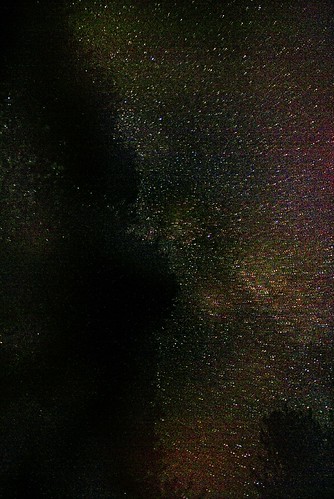Julian, my nine year old son, and I spent some time at the Glen Aulin High Sierra camp last week. At close to 10,000 feet, the nights were clear and cold.
Getting up to head for the bathroom facilities at about 2AM I saw the vast display of stars twinkling in the sky, as bright as they only are in the mountains where they seem so close one could reach up and touch them.
It was cold (did I say that before?), and I was glad to have carbon-fiber legs on my Gitzo tripod. (Carbon-fiber is light weight and strong, and unlike other materials used in tripods it does not conduct cold.)
I set my Nikon D200 so it could compensate for a long exposure (here’s more info about this setting). Looking up, I could see the stars swirling through the pine trees, but I couldn’t see much of what I was doing at the ground level. Having my headlamp on would obviously ruin the exposure. There was absolutely nothing to be seen through the viewfinder.
In programmatic mode, the camera didn’t register any light, and wouldn’t make a capture. I set the camera for a manual thirty second exposure with the lens wide open.
The LCD screen showed a completely black capture. I couldn’t tell, either when I took the photo or afterwards by daylight, whether I had anything. In fact, I kind of doubted it. But a photographer’s hope springs eternal.
Back home, on the monitor, I could see the smudge on the left representing dark silhouetted pine trees in motion, and the stars in glorious color. The stars don’t look quite like they did to my naked eye, because the sensor of a digital camera picks up UV and IR frequencies of light not visible to us.
I triple-processed the RAW with slightly different exposures for the trees, the background sky, and some of the individual stars.

Pingback: Photoblog 2.0: » Photoblog 2.0 Archive: » Xrays, Photograms, and Cross Processing, Oh My!
Pingback: Photoblog 2.0: » Photoblog 2.0 Archive: » Night for Day